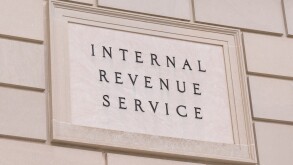The U.S. Treasury Department recently released final regulations under the base erosion and anti-abuse tax (BEAT), which targets outbound deductible payments to related parties by certain large corporations. The final regulations, which are accompanied by additional proposed regulations, became effective on December 6 2019. A key issue under BEAT and the final regulations is the extent to which payments received from related parties may be netted against deductible payments to related parties, reducing the extent to which the latter are subject to BEAT.
During the notice and comment process on the BEAT regulations, some stakeholders requested that Treasury clarify that netting is permissible with respect to cost sharing transaction (CST) payments between participants in qualified cost sharing arrangements (QCSAs) under Treas. Reg. § 1.482-7(j)(3)(i). Treasury declined to do so, finding that this would be beyond the scope of the regulations, and thus did not take any position as to the interpretation of Treas. Reg. § 1.482-7(j)(3)(i). Importantly, Treasury did express an awareness that BEAT places more weight on existing netting provisions than was previously the case, and indicated that it would study whether changes to such provisions are needed to take into account BEAT considerations.
The QCSA rules under Treas. Reg. § 1.482-7 require that participants share intangible development costs (IDCs) in proportion to their shares of reasonably anticipated benefits (RABs), and specify that CST payments should be made to achieve the correct share of IDCs. Frequently, situations arise where a U.S. QCSA participant incurs IDCs in connection with services received from a related party that is not a QCSA participant. In these situations, Treas. Reg. § 1.482-7(j)(3)(i) may permit netting of CST payments received against IDC payments to related non-participants. Specifically, the regulation states that “IDCs borne directly by a controlled participant that are deductible are deemed to be reduced to the extent of any CST Payments owed to it by other controlled participants pursuant to the CSA,” and that “[e]ach cost sharing payment received . . . will be applied pro rata against the deductions for the taxable year that the payee is allowed in connection with the IDCs.
To illustrate the potential for netting, we can take a simplified situation involving a QCSA between U.S. and Irish related parties, under which each party has a RAB share of 50 percent. The IDCs for the year are $300x, and are all borne by the U.S. party, which is entitled to $300x of deductions with respect to these IDCs. Of the $300x, $200x is comprised of costs incurred by the U.S. entity with respect to third parties (e.g., employee compensation, rents for research and development (R&D) facilities and equipment, etc.), while $100x represents the cost to the U.S. entity of contract R&D services provided by an Indian affiliate that is not a party to the QCSA. To align the participants’ IDC shares with their RAB shares, the Irish participant makes a CST payment of $150x to the U.S. participant.
Because the $100x payment to the Indian affiliate is deductible to the U.S. entity, it is potentially subject to BEAT. However, the payment is a deductible IDC and thus falls under Treas. Reg. § 1.482-7(j)(3)(i), which provides that it is deemed to be reduced pro rata by the $150x CST payment received from Ireland. Since the $100x payment to India represents one third of the U.S. participant’s deductible IDCs, one third of the CST payment, or $50x, is available to offset the payment, leaving the U.S. entity with a deemed $50x payment to India that may be subject to BEAT. The potential BEAT exposure with respect to the payment has thus been reduced by half. Note that the remaining $100x of the CST reduces the U.S. entity’s $200x deduction for third party costs to $100x, which is relevant for determining the denominator of the base erosion percentage.
The result makes sense - after all, if the point of the QCSA is for the U.S. and Irish entities to share the benefits and burdens of developing IP, half of the payment to India is really attributable to the Irish entity, and thus should not trigger BEAT liability in the United States. This analysis flows directly from Treas. Reg. § 1.482-7, and is not affected by the new BEAT regulations. Therefore, notwithstanding Treasury’s reluctance to commit to an interpretation of Treas. Reg. § 1.482-7(j)(3)(i), that provision should continue to permit netting in appropriate cases, although care must be taken to comply with applicable regulations, and taxpayers should be alert for future updates from the Treasury Department and IRS related to the interaction of the QCSA netting provisions and BEAT.
Mark Martin
T: +1 713 319 3976
Thomas Bettge
T: +1 713 319 2173













